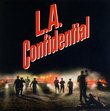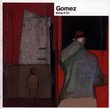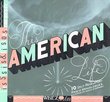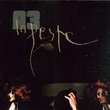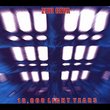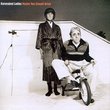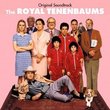| All Artists: Hoelderlin Title: Hoelderlin Members Wishing: 0 Total Copies: 0 Label: EMI Original Release Date: 3/27/2007 Re-Release Date: 8/10/2007 Album Type: Import Genre: Rock Style: Number of Discs: 1 SwapaCD Credits: 1 UPCs: 0094638538028, 094638538028, 094638538059 |
Search - Hoelderlin :: Hoelderlin
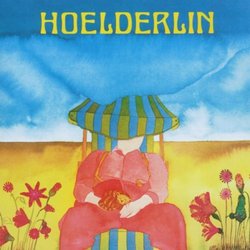 | Hoelderlin Hoelderlin Genre: Rock IMPORT-EU |
Larger Image |
CD DetailsSynopsis
Product Description IMPORT-EU Similarly Requested CDs
|
CD ReviewsHOELDERLIN resurrects from psychedelic FOLKROCK to HEAVY PRO W. T. Hoffman | Pennsylvania, United States | 05/18/2008 (5 out of 5 stars) "HOLDERLIN's first album, was recorded in 1970, and entitled HOLDERLIN's TRAUM. (Dream.) One could hardly call it "Krautrock", in the sense one heard that genre develope by Can, Faust, early Tangerine Dream or Amon Duul. Holderlin's Traum, for one thing, was one of the very first rock albums sung completely in German. Moreover, their first album is definately PSYCHEDELIC FOLK, right down to the sitar on "Strohhalm", dreamy lyrical themes, middle eastern percussion, and recorders. I would place their early sound somewhere between other German psych-folk musicians Witthuser and Westrupp, and the band Broselmaschine. Both those bands, like Holderlin, also sung in German, and had sitars/recorders/ and trippy production. (and were all signed to OHR records.) So, based on my love for HOLDERLIN'S TRAUM, and little else, I ordered HOELDERLIN's second album, when I saw it newly remastered and released on CD. The album was a shock. Gone were the German lyrics, the psychedelic folk touches like the sitar, and the dreamy female singer from the first album. Instead, they had moved into a heavy prog/art rock sound, sung by different male vocalists in English. (with a german accent tho.) Now, there is nothing wrong with this, and had Holderlin released something to fill in the blank between 1970 when their first album was published, and this album from 1974, maybe their stylistic change wouldnt have come as such a shock. But after a few listens, I asked myself, "Are they really so different?" The band members were mostly the same. It was almost as tho the folk band just added more instruments, more complex composistions, and more sophistication. SO, underneath a distorted power chord on the guitar, acoustic guitars still play beautiful arpeggios, while a mellifluous flute fills out the sound picture, with filligrees of melodies. However, on top of that dense texture, a sax solo comes to the forfront, while the singer repeats the hook. (I LOVE MY DOG, is the song I'm discribing.) After that, HONEYPOT completes the first side of the album. This is the song which best reflects back to the band's early work. Instead of distorted guitars, acoustic guitars rule the soundscape, with flowing bass, and piano arpeggios. Then, a middle eight, with strong drumming and electric guitar, moves the song from the acoustic folk style, into a full blown ART ROCK instrumental passage, with crashing piano chords, polyrhythms on the drums, and some cool electric guitar and electric violin passages feeding upon each other. Some of the production definately is surreal, and very texural, thanks to CONNY PLANK's help behind the sound controlls. I wish I could just point to one single famous British band, who best excemplified this sound, and made this transistion. Really, I would say this album sounds most like STRAWBS, when they were in their "GRAVE NEW WORLD" period. Some of the vocals sound JUST like a cross between Peter Gabriel and David Cousins, in fact. Nevertheless, HOLDERLIN is a German band, with their own sound, obviously Teutonic, and well within the very popular artrock/prog movement going full throttle thruout the European Rock scene. This album has an 18 minute long "SUITE" on the second side of the album, and a bonus track of the band playing the long piece live, which sounds surprisingly good. (I say this, both from the limitations in recording a band live, and the complexity of reproducing live a 15 minute song with tons of changes.) It's within that side long song, where the tricky, off center rythyms and strange dark chords typical of German rock from this period comes thru best. If you know GENESIS from around their "SELLING ENGLAND" album, with their random changes in dynamics, tempo, instrumentation, lyrical theme, and so on, then you know what HOLDERLIN were attempting on this song-suite I've been critiquing, "DEATHWATCHBEETLE". Violins and piano arpeggios give way to drums and bass rock, which follows onto other ideas. I do hear their strong influence by Genesis and Strawbs, but then again, ELOY sounds like Jethro Tull, WALLENSTEIN sounds like Moody Blues, and AMON DUUL like early Pink Floyd. Krautrock, and a total break with the UK music scene, did not predominate the BundesrepublikDeutschland's 70s music scene. It was every bit as heterogeneous, as the music scene in the States and the UK. Heavy Metal, Boogie blues, space rock, jazz rock fusion, folkrock, prog and blues rock, were right along side the KRAUTROCK and KOSMISCHE sounds typical of Germany. I like this bands sound, because they ARE different than most other German bands I hear from the 70s. HOLDERLIN develops their predominantly instrumental, jazzy,side long excursions into experimental composistions, without sounding trite, or obviously ripping off any one band's sound. So when i hear this album, it DOES sound modern, or at least as modern as the best Peter Gabriel GENESIS tracks. In conclussion, if you are a huge fan of the first HOLDERLIN album, and their female singer handling German lyrics, and their psychedelic folk, then you might be disappointed in this album. But, if you want to hear a German band from the height of the KRAUTROCK period, do some great progrock and artrock, I can only recommend this. I like this album in spite of my expectations to hear another sitar loaded psychedelic folk album sung in German. As for German "PROG ROCK", i'll take what I hear on this album over ELOY, BIRTH CONTROLL, WALLENSTEIN, or even most KRAAN any day of the week. A quick note in closing about the sound of the remastering. It's crystal clear, and doesnt have that saturated, overly compressed mastering you hear so often now. And, remember: If you like this type of music, or this band IN THE LEAST, buy the album now, cos it wont stay in print long, nor would I expect to find it used at your local used store, in a few years. This is way off the beaten path, even for Germans."
|

![Born On A Pirate Ship [ENHANCED CD]](https://nationalbookswap.com/cd//m/01/2901/232901.jpg)
